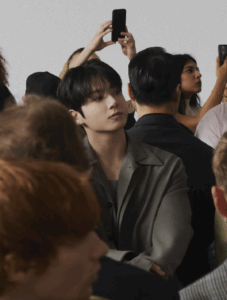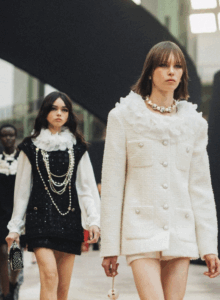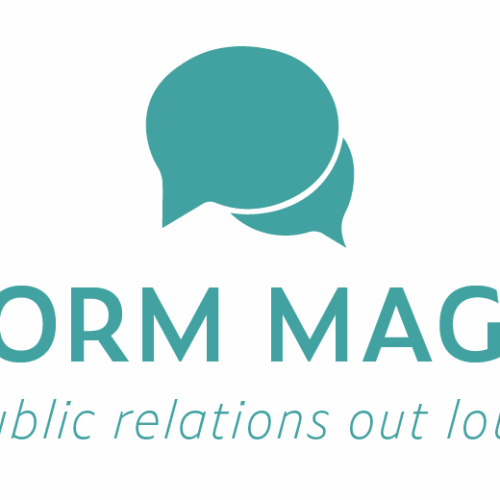Who Really Runs The Runway?
Published on November 4, 2025, at 6:05 p.m.
by Maggie Hill
Every year, Fashion Week turns the heads of millions. “It’s the most exciting time of the year for all fashion professionals,” said Dr. Martina Topić-Rutherford, a public relations professor who specializes in fashion PR at The University of Alabama. On the surface, it’s all about designers revealing new collections, models walking down runways and who gets talked about the most in Vogue. But behind every seat, post and press release are PR professionals who don’t just shape the event, but shape the narrative of fashion itself.
Fashion Week isn’t just an event; it’s a PR playground. From managing influencers and producing coverage for weeks after the shows end, PR is what keeps Fashion Week alive long after the runway.

“For PR professionals, Fashion Week is the heartbeat of the fashion calendar,” said Ilyssa Wexler, CEO of Fashion for Futures. Before the models ever step on the runway, PR teams are busy prepping for every detail. Guest lists are being made and seating charts are being assigned. But, all at the same time, they’re controlling the message and timing. They’re deciding when to tease a collection and how to pitch a story to the press.
“The PR team shapes how the show is received by crafting the story before it even happens,” said Wexler. “They position the designer’s message, why this collection matters now and make sure that story stays consistent across interviews and social media.”
The show is only a small part of everything that goes into Fashion Week. PR teams are not just presenting fashion, they’re controlling its perception. While the show itself might only last 15 minutes, the message that PR builds around it can last for years.
For major houses like Dior, Chanel and Saint Laurent, Fashion Week is also a time for brands to remind people of their history and reputation in a crowded, fast-moving industry. Topić-Rutherford said, “Designers use these shows and even fashion documentaries to distinguish themselves from fast fashion. It’s about reasserting quality, artistry and heritage.”

A great example of this is Dior’s fall 2025 ready to wear show during Paris Fashion Week where the “past and present collided”. The house didn’t just unveil a new line, it delivered a narrative. The venue, lighting and guest list were specifically designed to blend eras and identities. PR teams laid the groundwork before the show, highlighting the mix of the past and present. This allowed the PR team not only to present the collection but also to influence how it was received.
“The follow-up is just as critical as the show itself,” said Wexler. “We use post-show content to extend the collection’s story, drive engagement and open doors for collaborations or retail opportunities.”
This year, at New York Fashion Week, Calvin Klein hit it out of the park with its strong social media engagement after the show. According to Women’s Wear Daily, Calvin Klein received a 12.9 million engagement score. This was up more than 1,168% from last year’s score. Much of this buzz came from Calvin Klein’s posts on X (formerly known as Twitter), featuring Korean singer and songwriter Jung Kook, whose global fanbase helped drive the brand’s online success.
By managing every detail of messaging and media access, PR teams have more influence than ever over how Fashion Week is perceived. But with that control comes a new challenge. This shift has blurred the lines between journalism, PR and social media.

While some tension remains, editors sometimes see influencer content as less expert, but most brands have learned to embrace both worlds. “There’s definitely competition,” Topić-Rutherford said. “But magazines and bloggers now coexist. They all get invited to fashion shows and they all help tell the story.”
Front rows once reserved for editors from Vogue and Harper’s Bazaar are now also filled with influencers who have millions of followers online. Bloggers have transformed into global entrepreneurs, proving that follower count can sometimes carry more weight than press credentials.
For PR teams, this has reshaped strategy entirely. Press access and influencer partnerships now go hand in hand. In today’s fashion world, storytelling is no longer just glossy magazine spreads, it unfolds through real-time posts, TikToks and collaborations that balance being relatable with being inspiring.
Fashion Week is more than a calendar event, it’s a masterclass in storytelling. The runways may go dark, but the narratives PR teams build keep the spotlight glowing. In an industry built on image and influence, it’s clear that the real power of Fashion Week isn’t just on the runway, it’s in the story being told about it.




